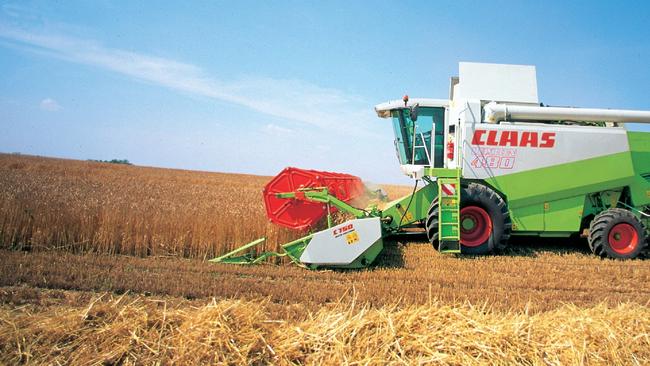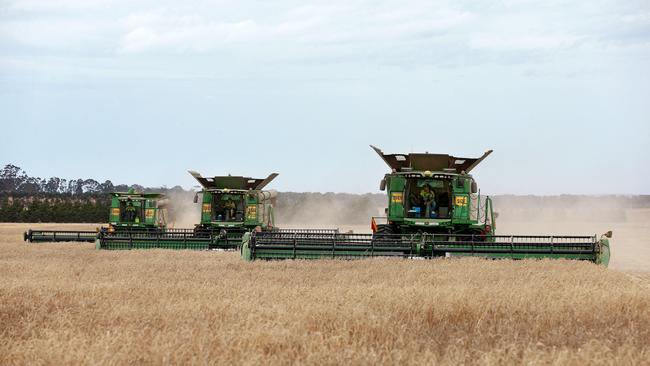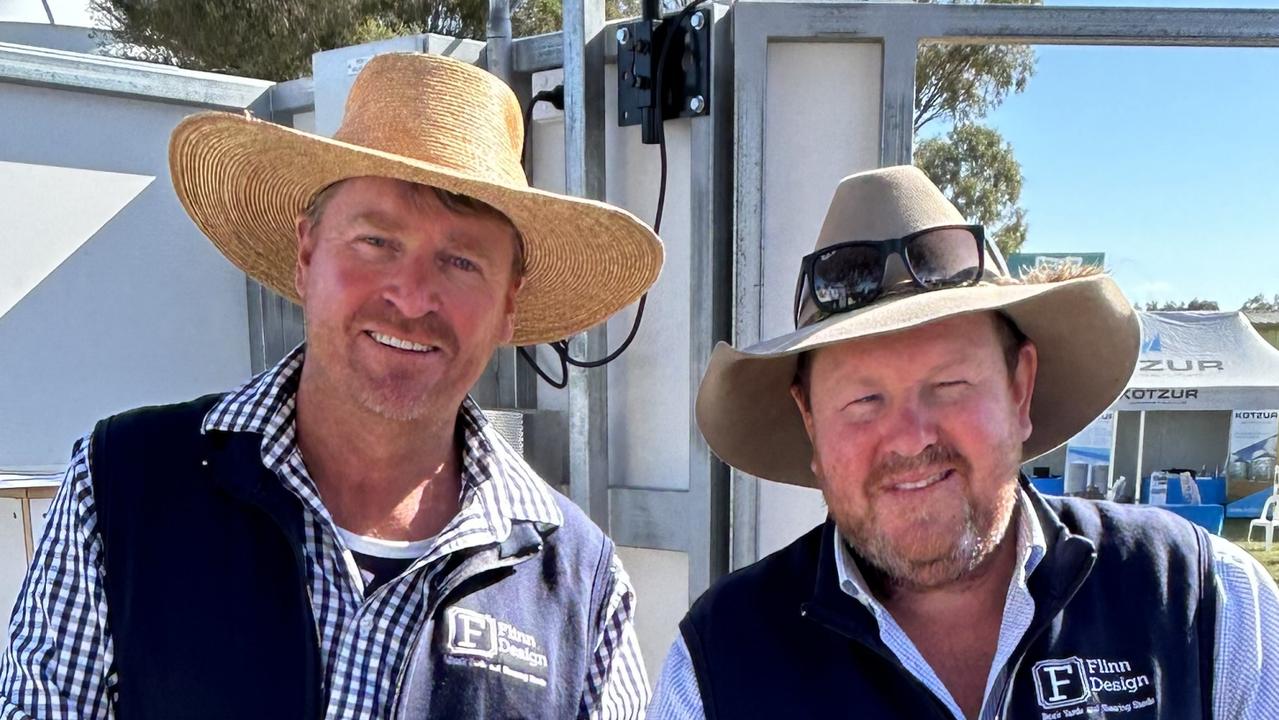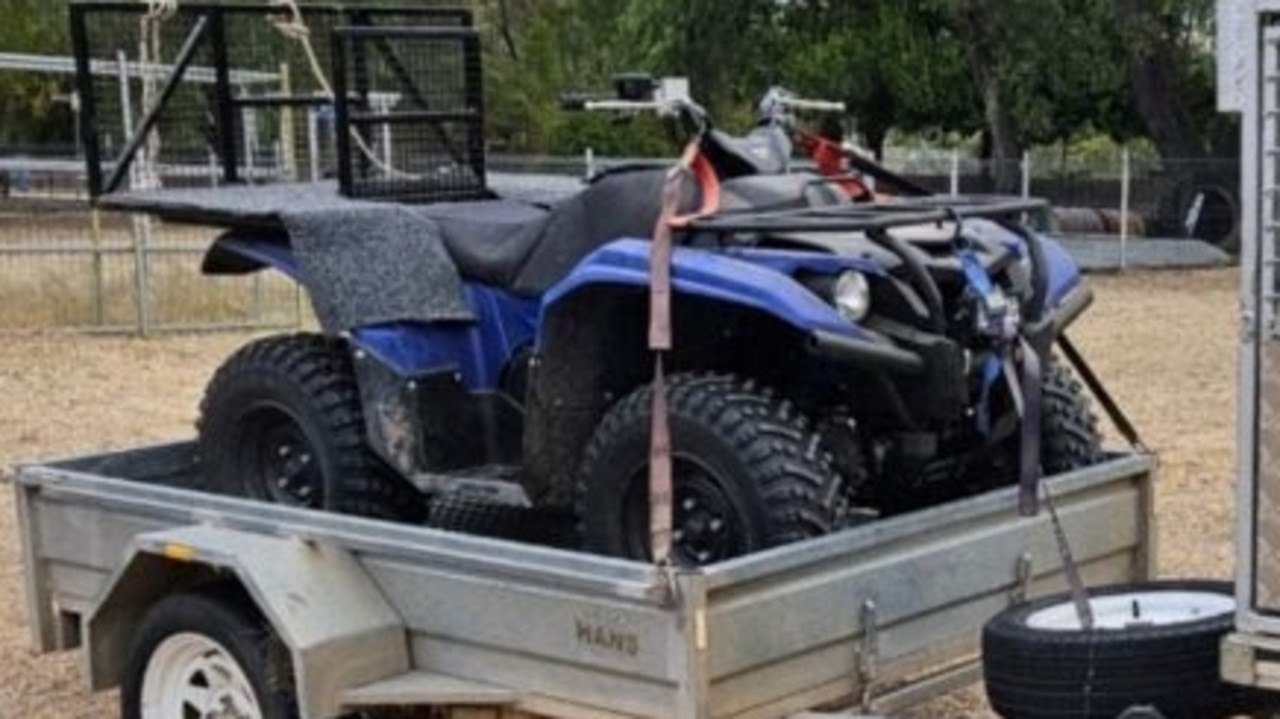Farm machinery: Big harvest, Covid puts pressure on spare parts supply
With more combines in the field this year, due to record sales and a bumper crop, spare parts could become a major pain point.

Farm machinery manufacturers have been working overtime to guarantee availability of spare parts as another bumper winter crop harvest looms.
With a record 23.2 million hectares sown this year, yielding an expected 47 million tonnes, servicing and repairing the harvest fleet will be a major challenge for farmers, contractors and dealerships.
Not only are there more harvesters in the field due to record sales in the past two years but disruptions to international and domestic freight due to the pandemic have made the job of ensuring enough spares are on hand, extra challenging.
In the 19 months to August, 890 new combine harvesters were sold in Australia.
Claas’s product general manager, Tim Needham, said there would be more machines working than ever and for longer periods during the harvest, which kicks off in Queensland in two weeks, so demand for spares will be substantial.
Claas delivered 100 new Lexion combine harvesters this year, bringing the total Lexion fleet in Australia to 1000 machines.
Ensuring parts can be supplied quickly had been extra difficult with international and domestic airfreight significantly curtailed by Covid for the past year, Mr Needham said.
International and domestic flights had been severely reduced and that would continue through harvest.
“For example there is limited or next to no airfreight in Australia on a Friday, so if somebody orders a part on Friday morning it’s got to be trucked.”
But even road freight was limited because there were fewer truck drivers on the road due to Covid lockdowns and quarantine so that creates challenges for everyone, he said.
But the company had planned early for these problems, progressively ramping up its stocks since last year, adding about 30 per cent extra to warehouse stock in Melbourne plus another $4 million-worth of additional parts and inventory spread across the country through their dealers to ensure quick distribution when needed.
“We have tried to ensure each state is as self-sufficient as possible,” Mr Needham said.
“So, we are moving parts around the country more than we used to, placing stock in centres where orders can be shipped most efficiently.”
Claas uses a computer system called PIM to help plan how many and where spare parts will be needed, taking into account where new machines have been sold, the season in each state and historical data.
It then predicted what parts were needed and where to stock them, he said.
Mr Needham said they had spent many hours assessing every single part on the Lexion for wear and tear and potential failures, to ensure enough of each were on the spares shelf.

Meanwhile John Deere has more than doubled its weekly in-flow of spare parts, in addition to taking delivery of 110 tonnes of goods two weeks ago.
John Deere Australia New Zealand managing director Luke Chandler said they had secured an ongoing 10 tonnes of cargo capacity a week over recent months that would continue in the lead up to harvest, in addition to the 110 tonnes on the dedicated freighter, to provide farmers with the swift and efficient support they need throughout the all-important period.
John Deere parts are dispatched from its Australia and New Zealand Distribution Centre in Melbourne, providing more than 133,000 stocked lines to support over 340 current models of John Deere machinery in the field, as well as products from earlier John Deere generations.
“We know harvest is often the single biggest and most important event on the calendar for broadacre enterprises, and that it is not only critical to the bottom line of farm businesses but also to the consistent and secure flow of high-quality food to the world,” Mr Chandler said.
“This is why we have worked to prioritise securing this additional capacity to boost our in-flow of stock — to place us on the front foot in resourcing what is on course to, for a number of key growing areas, be another outstanding crop for our dedicated grain growers.”

Case IH has also been preparing for the big harvest ensuring its parts supply meets the expected demand during this period.
“Prioritising combine and high horsepower tractor parts, we have been increasing supply since February, and are in a stronger position now than the same time last year, and we continue to organise additional deliveries of parts in the run-up to harvest,” said Case IH Australia New Zealand general manager Pete McCann.
To ensure customers can get what they need, when they need it, we also have the CNH Industrial-operated dealer hub in place for a second year, allowing for the movement of parts from the national distribution centre in Sydney to 24 strategic dealer locations around the country to increase support during harvest.
“Case IH understands just how critical it is to minimise any downtime for machinery during what is the busiest time of the year for so many of our customers, and the ability to source parts quickly and efficiently is key to getting combines and tractors back in the paddock in the shortest possible time,” Mr McCann said.




